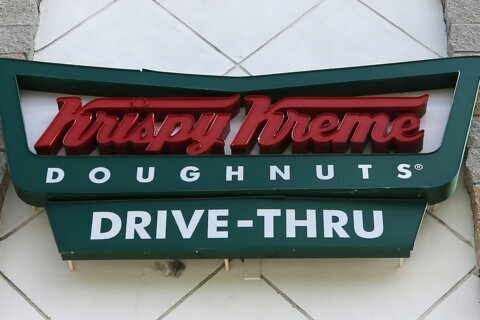WASHINGTON — It may sound strange, but one local bar is changing the way whiskey tastes, and it’s doing so with the power of sound.
Chris Mendenhall, lead mixologist at Quadrant Bar and Lounge, located inside The Ritz-Carlton on 22nd Street NW, stocks his bar with more than 150 whiskeys. And lately, he has noticed more customers ordering the brown liquor. (You can thank “Mad Men” and the recent craft cocktail revolution for that, he said.)
But increased interest aside, not everyone can afford to taste the range of the spirit. The longer a whiskey is aged, the higher its price tag, with some pours costing upward of $1,000.
But Mendenhall, along with a few others in the U.S., have discovered a hack-of-sorts to age whiskey without using time. Instead, they’re using sound waves to alter the flavor of the drink.
“What [the sound waves do] is mimic time,” Mendenhall said. “We can’t clone Father Time, but we can show you his younger brother who looks a lot like him.”
Mendenhall discovered the technology while reading an article that examined the growing demand for whiskey and various ways to speed up the aging process in order to meet that demand.
“Whiskey, unlike vodka or gin, it takes time to make. You know, your scotch styles are going to take at least 10 years for something good. Kentucky bourbon, by law, is four years,” Mendenhall said.
And in this research, he discovered some industry professionals experimenting with everything from added pressure, to amplified sound to replace the aging process.
“There are distilleries that are putting speakers on barrels and they’re blasting heavy metal music, or they’re blasting Mozart, or they’re just amplifying things or they’re distorting it and letting the sound kind of shake it and see what happens,” he said.
Now, a “nook” in the kitchen of Quadrant is dedicated to Mendenhall’s own experiments. Using various soaked woods and a homogenizer rod that dispenses about 20,000 pulses per second of amplified sound waves, he is transforming liters of “base” whiskeys into products that taste like they’ve been aged for decades. But really, all it takes is 30 minutes.
“It can’t replace time, itself, but what it can do is give people an idea of what time does,” Mendenhall said about the end products.
So why aren’t more distilleries adopting this technology? According to Mendenhall, the method has a Cinderella effect. About a year after sound waves are applied, the spirit reverts to its original state.
“It’s just like milk. It’s got an expiration date. We’re going to try to make sure we use it, and if we don’t, then we’re going to get rid of it,” he said.
Mendenhall has been experimenting with sound-aged recipes and ratios for over a year. He makes it clear that Quadrant is not distilling anything, but rather adjusting the flavor profile of existing whiskeys already on the market.
Yes, he understands there are going to be skeptics, and because of that, he is pouring flights of each “base” whiskey next to its “changed” counterpart. (Currently Quadrant has four sound-aged spirits on its menu, with pairings ranging from $18 to $20. Expect more in the future.)
“Not everyone has the ability to go and enjoy a 25-year-old spirit or a 30-year-old spirit because the prices are getting exorbitant, so what we can do is show them this is what it’s like, and it’s not hundreds of dollars, and I think that’s fun,” Mendenhall said.
“And our hope is that we hit a few home runs and people come in and just order [the changed spirits] by itself.”
The sound-aged spirits, part of Quadrant’s Traveler’s Journal menu, debut June 1.







